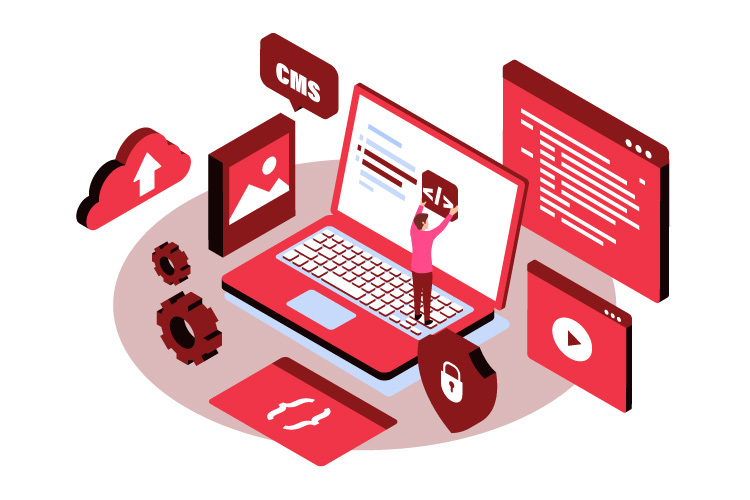DevOps Practices for Continuous Integration/Continuous Deployment (CI/CD)
In today’s rapidly evolving software development landscape, where speed and productivity are paramount, the integration of DevOps practices has become essential. Out of all the practices, Continuous Integration/Continuous Deployment (CI/CD) is a key factor in speeding up the software delivery pipeline. Welcome to our blog! Here, we explore the core concept of CI/CD, its advantages, and strategies for successful implementation in a DevOps environment.
Understanding CI/CD:
Continuous Integration (CI) is about regularly integrating code changes into a shared repository. This ensures that each integration is checked by an automated build, helping teams catch and resolve issues early on. However, Continuous Deployment (CD) streamlines the deployment process, allowing software to be released into production at any time with minimal manual intervention.
Continuous Integration (CI)
Continuous Integration (CI) is a crucial practice in the CI/CD methodology, focused on automating the integration of code changes into a shared repository. By frequently merging changes, CI helps to minimize the chances of merge conflicts and promotes better collaboration among developers. This process entails the compilation of code, the building of the application, and the execution of automated tests to guarantee the quality of every code modification. CI focuses on identifying and resolving bugs at an early stage of development, reducing the chances of deploying faulty code to production environments.
Continuous Delivery (CD)
Continuous Delivery (CD) boosts the advantages of CI by automating the release process of production-ready code to a shared repository, like GitHub. This practice speeds up the delivery of software updates, promoting more openness and teamwork between development and operations teams. Yet, the success of continuous delivery hinges greatly on the proper execution of continuous integration. By prioritizing the release of thoroughly tested code, CD significantly improves the reliability and stability of software deployments.
Continuous Deployment
Continuous Deployment is the ultimate level of automation in the CI/CD pipeline. It allows for code changes to be automatically deployed to production environments. This practice optimizes the software development lifecycle, enabling fast and frequent releases of new features and enhancements. Ensuring the effectiveness of test automation during the CI phase is crucial to avoid deploying flawed code. Continuous deployment is all about making smaller, incremental updates to reduce the complexity and risk of large-scale deployments. Organizations can experience enhanced agility, responsiveness, and alignment with agile development principles by adopting continuous deployment.
The Benefits of CI/CD:
- Reduced Time-to-Market: By automating the build, test, and deployment processes, CI/CD pipelines drastically cut the time required to provide new features or bug fixes to clients, increasing market competitiveness.
- Improved Code Quality: Frequent integration and automated testing detect bugs early in the development cycle, resulting in greater code quality and dependability.
- Increased Collaboration: CI/CD promotes cooperation among developers, testers, and operations teams by providing a standardized platform for exchanging code changes and ensuring that everyone is on the same page.
- Enhanced Feedback Loop: Rapid response from automated tests and deployments enables teams to iterate faster, fix problems more rapidly, and better integrate user input into the development process.
- Higher Deployment Frequency: With automated deployment pipelines, organizations can release software upgrades more often, meeting changing consumer demands and keeping ahead of the competition.
Key Practices for Successful CI/CD Implementation:
- Infrastructure as Code (IaC): Implementing IaC with technologies like Terraform or Ansible guarantees that infrastructure settings are versioned and repeatable, allowing for consistent environments throughout development, testing, and production.
- Automated Testing: Comprehensive test suites, which include unit tests, integration tests, and end-to-end tests, should be automated and incorporated into the CI/CD pipeline to check code changes before deployment properly.
- Version Control: Using a strong version control system, such as Git, allows teams to effectively manage code changes, monitor alterations, and communicate across distant teams.
- Continuous Integration: Developers should commit code changes frequently to the shared repository, triggering automated builds that compile the code, run tests, and generate artifacts for deployment.
- Continuous Deployment: Automated deployment pipelines should be designed to easily deploy programs into production environments after passing all tests, with the option to roll back modifications as needed.
- Monitoring and Logging: Integrating monitoring and logging technologies into the CI/CD pipeline enables teams to proactively analyze application performance, spot anomalies, and fix problems, ensuring that production runs smoothly.
- Security and Compliance: Security checks, vulnerability scanning, and compliance validation should be included in the CI/CD pipeline to reduce the risks of delivering insecure or non-compliant code into production settings.
Challenges and Best Practices:
Despite its obvious advantages, deploying CI/CD has its own set of problems, including cultural opposition, toolchain complexity, and maintaining alignment with business goals. To address these difficulties, organizations should prioritize the following best practices:
- Cultural Transformation: Encourage cooperation, experimentation, and continuous improvement by establishing openness, trust, and accountability across development, operations, and business teams.
- Automation Everywhere: Automate as much of the software delivery process as feasible, from code commits to deployment, to avoid human mistakes and shorten cycles.
- Iterative Approach: Begin small and iterate progressively, concentrating on automating core operations and gradually broadening the reach of CI/CD across the organization.
- Feedback-driven Development: Collect input from stakeholders, end users, and automated monitoring systems to identify improvement areas and appropriately prioritize upgrades.
- Continuous Learning: Encourage team members’ continuous learning and skill development by giving access to training materials, workshops, and knowledge-sharing sessions on DevOps methods and technologies.
Conclusion:
In the current competitive market, organizations must embrace DevOps practices, specifically CI/CD, to keep up with the demand for rapid innovation, and customer satisfaction, and stay ahead of the competition. Organizations can greatly improve their software delivery pipeline, code quality, and overall agility by embracing CI/CD principles, leveraging automation, and fostering a culture of collaboration and continuous improvement. This allows them to stay resilient and adaptable in the face of evolving business requirements. As we move forward on our path to DevOps maturity, it’s important to keep in mind that the heart of CI/CD goes beyond simply automating processes. It’s about fostering a culture, mindset, and practices that promote sustainable innovation and drive business growth.






